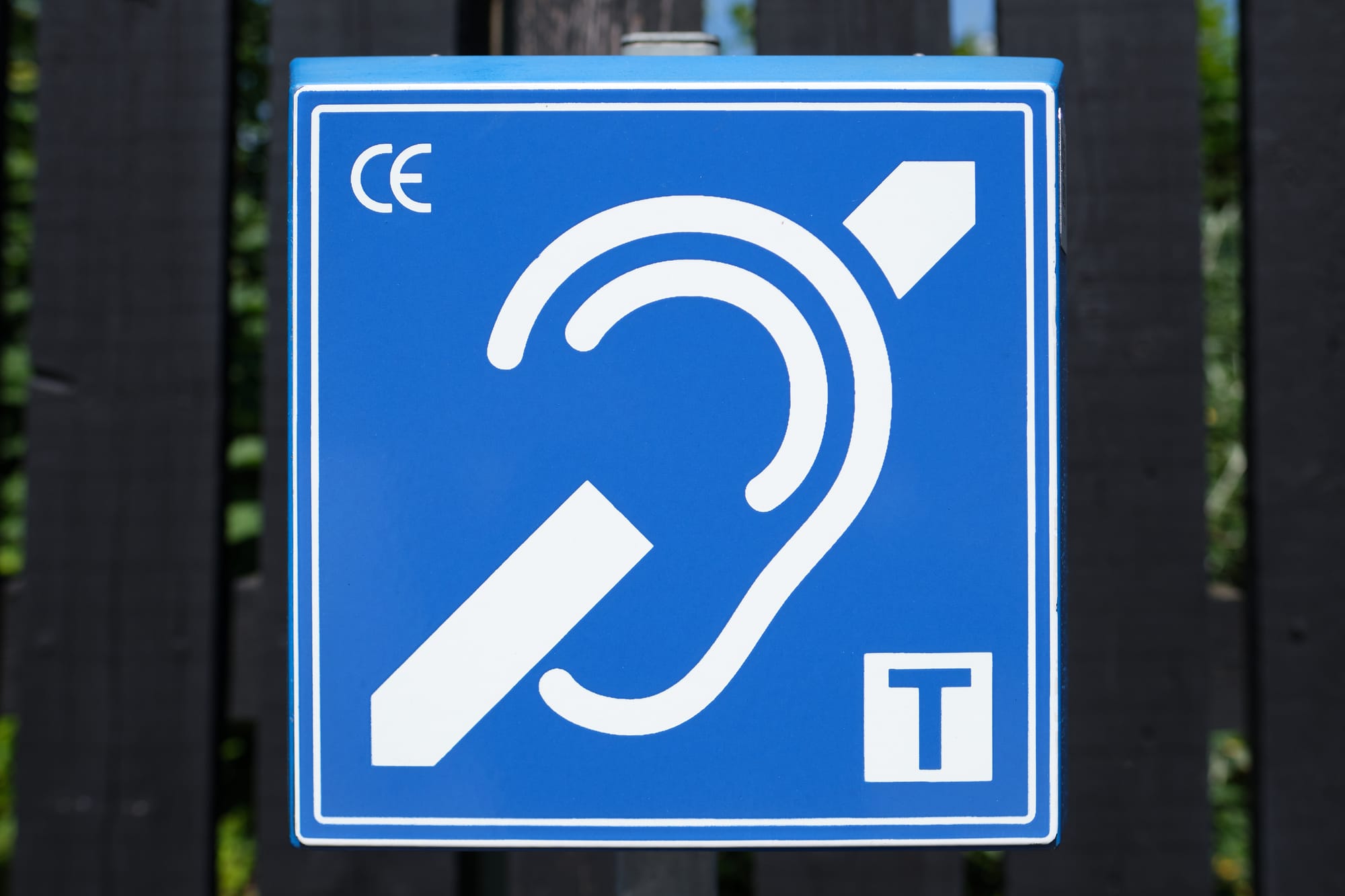A Brief Discussion of Hearing Loops

June 2023
My wife and I have agreed to submit articles to this publication on behalf of the Discussion Group for Better Hearing. In this month’s article we would like to discuss hearing loops.
A hearing loop is assistive listening technology for use by people with hearing aids or cochlear implants. The hearing loop is currently the best way to hear better in a public venue such as a church, theater, or public meeting space. A hearing loop works by using a sound source, such as a microphone, to feed the speaker’s voice into an amplifier. The amplifier sends a current through one or multiple wires embedded in the floor or ceiling. The current generates a magnetic, wireless signal that is picked up by the user’s hearing device when the telecoil setting on their hearing device is activated. The telecoil inside the hearing aid is sensitive to electromagnetic fields. The user’s hearing device converts the signal into sound that is customized by each user’s unique hearing device based on how it was programmed by their hearing professional.
A telecoil is an optional component inside one’s hearing device. When the user activates their telecoil, it takes the place of the hearing device’s microphone. Telecoils are available with most behind-the-ear hearing aids. If space allows, a telecoil may also be available in some in-the-ear type hearing aids. The user activates the telecoil by pressing a button on their hearing aid or selecting the telecoil option on the smart phone app that controls their hearing device.
When buying a hearing aid, consumers should always ask to have a telecoil included in their device and to have the telecoil program activated. Arizona state law mandates that if you purchase your hearing aids from an Arizona licensed hearing aid dispenser or audiologist you must be informed about the telecoil and its benefits.
The following link provides a short demo of the benefits of a hearing loop: https://www.youtube.com/watch?v=LwHu50UV3dE. If you do not want to go to the trouble of typing this link, send us an email and we will forward the link to you. After a brief introduction, the video demonstrates the benefit of a loop. I would encourage even those with good hearing to listen to the video.
Many rooms in Saddlebrooke have hearing loops including the HOA1 Activity Center. MountainView Ballroom, Sonoran Room and the Desert View Theater. It is important that everyone uses an available microphone so that those relying on the loop can hear both the presentation and audience questions. Occasionally problems can be experienced with the loop in a meeting room. Sometimes it is a simple matter of asking to have the loop turned on, but recently several individuals could not connect to the loop in Desert View. Our group reached out to the HOA staff, and they collaborated with us to adjust the loop. If you do encounter problems with one of the loops in Saddlebrooke, let us help you communicate the issue to the HOA staff.
One drawback of hearing loops is that they require a wire to be installed in the floor or ceiling. In some cases that can be impractical or very expensive. So, is Bluetooth an alternative option? Unfortunately, current Bluetooth technology is not a practical assistive listening technology for public venues. Bluetooth is a short-range signal, and does not allow for broadcast audio streaming, so the audio can’t be shared by multiple users. A loop has no range limit. A person just needs to be “within the loop” area. A loop also allows for broadcast audio streaming as multiple users can connect to the loop. Auracast Bluetooth is a new form of Bluetooth that will revolutionize wireless connectivity and may one day replace hearing loops. It will allow for broadcast audio streaming. Unfortunately, this new technology is likely 5-10 years away. We will further discuss Auracast in a future article.
We would be interested in hearing comments or questions that you may have relative to this article. Our contact email is tgaule@outlook.com. This is also a topic that we can discuss at one of our monthly meetings. The Discussion Group for Better Hearing meets the 2nd Friday of each month at 10:00 a.m. in the Sonoran Room at Mountain View Clubhouse. For more information contact Jennifer Jefferis, jenjefferis4u@gmail.com or Lyle Larson, lllarson72@gmail.com